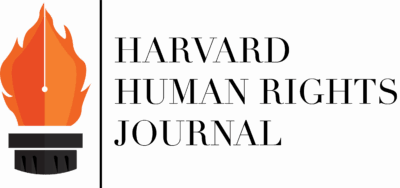Book Review: William Schabas’ The International Legal Order’s Colour Line
Edith Amoafoa-Smart
At once a historical account and an unequivocal critique of the international legal order, William Schabas’ The International Legal Order’s Colour Line, is inspired by the Third World Approaches to International Law (TWAIL) tradition. See William A. Schabas, The International Legal Order’s Colour Line: Racism, Racial Discrimination, and the Making of International Law (2023). It is a must read for people interested in an honest reckoning of the function of law in designing and entrenching global inequalities and making winners out of the Global North and losers out of the Global South. It is a necessary exploration of how racial discrimination is treated at the global stage in legal terms, who the actors are in pushing this agenda on the international stage, and the challenges that they have faced, all in very fine detail, without historical or contemporary gloss. The book establishes that its goal is twofold: one is to describe the conflict between racial equality and racial discrimination, and the second is to highlight the often-overlooked contributions of the Global South to transform international law into a more progressive legal regime.
William Schabas borrows the eloquence of W.E.B. du Bois in the book to point out the multiple racist infractions in his historical survey of the landscape of international law. As to the genesis of said color line, Schabas points to the 20th century when Global South states first had to battle for and earn the title of ‘civilized nations’ in international law and when they used what was international law then to challenge the racist foundations of the existing legal order they had gained entry into. Importantly, he tracks the changes in the nature of the discourses objecting to racism in international law with the advent of new states from the colonized world on the international scene. These new states transformed the discourse on racism from one that was “half-hearted, patronizing and paternalistic” to one that resolutely, albeit politely, fought against white supremacy in international law. Id. at 2.
Schabas highlights the manifold markers of inequality in international law. While the United Nations General Assembly purports to reflect an equality of sovereigns, the United Nations Security Council proves the true inequality of sovereigns by granting exclusive rights and privileges to a select few states. The Universal Declaration of Human Rights purports to embrace human rights for all through equality and non-discrimination while also referencing “non-self-governing territories” and so in effect, proclaiming rights that “were completely inaccessible to the indigenous peoples of the European colonial empires.” Id. at 7. The Mandate system of the League of Nations was a cover for the “division of the spoils of war” backed with legal force. Id. at 68. The use of international law as a legal instrument to back slave trade and its inherent racial discrimination, the confrontation between international law and the apartheid regime in South Africa, and the targeting of Ethiopia and Liberia, the only African states not subject to European control at the League of Nations, all belie the legal order’s racist traits.
On contributions by Global South states and by ethnic minorities in the Global North, notably W.E.B. du Bois and Marcus Garvey, Schabas highlights landmarks like the United Nations General Assembly’s first human rights treaties to be adopted – the International Convention on the Elimination of All Forms of Racial Discrimination (ICERD) and the Convention on the Prevention and Punishment of the Crime of Genocide. In the General Assembly, these treaty efforts were resisted by Global North states. When interventions into racial discrimination in southern Africa were proposed in the Security Council, they were repeatedly vetoed by the United States, France, and United Kingdom trio. While two of those powers were blinded by their delusions of imperial grandeur, the third was deeply embroiled in Jim Crow segregation and disenfranchisement so that it had no interest in promoting or allowing a global campaign against racism and apartheid. The myth of white racial superiority where the prolonged apartheid in South Africa was concerned was ruthlessly defended by imperial powers who insisted that taking decisive Security Council action on the legitimized and enforced racial inequality in South Africa was outside the scope of Article 2(7) of the UN Charter.
“The International Legal Order’s Colour Line” is altogether impressive for its comprehensive historical account of international law’s underbelly. Schabas leaves nearly no stone unturned. This is a well-researched body of historical work that honors the voices from the Global South that leveled and continues to level coordinated challenges at a body of law that had gone uncontested for the length of their oppression.
